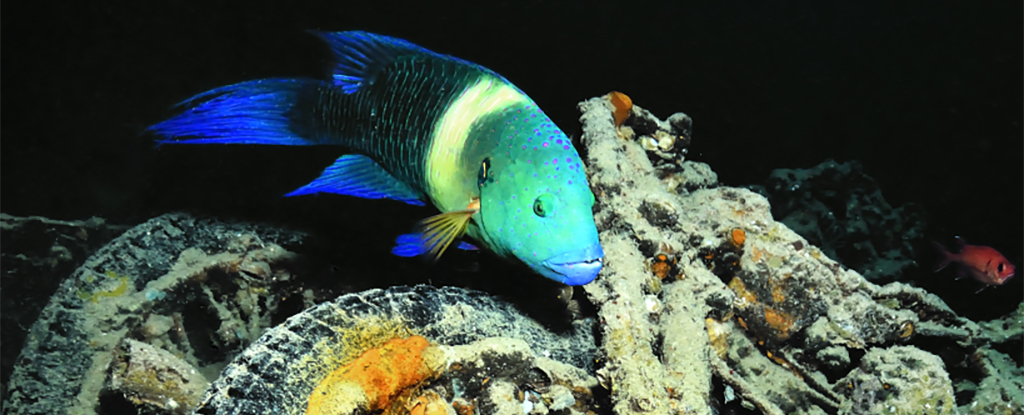Products You May Like
An eight-year survey of the famous SS Thistlegorm shipwreck has revealed that it’s been transformed by marine life into an artificial reef, where dozens of different species have made their home.
A team of researchers from the University of Bologna in Italy enlisted the help of volunteer divers to check off organisms on a list of different underwater taxa as they saw them. At the end of the survey, 71 of the 72 listed entries had been observed on the wreck.
The team behind the work says the more we know about artificial reefs such as this one, the better we can protect natural coral reefs. It’s possible that both artificial and natural reefs can be used to boost marine biodiversity in the future.
“The SS Thistlegorm provides a compelling example of how artificial coral reefs can sustain a well-established community structure similar to those of their natural counterparts,” write the researchers in their published paper.
This is by no means the only shipwreck to be taken over by marine life, and artificial reefs tend to mirror large natural reefs they happen to be near. That’s certainly the case with the SS Thistlegorm wreck in the northern Red Sea.
Common kinds of marine life found included species of soft tree coral (Dendronephthya), the giant moray (Gymnothorax javanicus) eel, squirrel fishes (Sargocentron), humpback batfishes (Platax), the Carangidae family of ray-finned fishes, the Red Sea clownfish (Amphiprion bicinctus), and the Napoleon wrasse (Cheilinus undulatus) fish.
What’s more, populations of these various marine organisms seemed to stay fairly stable over the course of the study period, with some variations due to the season of the year and the temperature of the water.
Such an extensive survey was made possible through the help of citizen scientists taking diving trips to the wreck, as part of the Scuba Tourism for the Environment project. The scheme operates in several locations in the Red Sea.
“This approach to citizen science allows participants to carry out their normal activities (volunteer behavior is unchanged throughout the survey), and to collect casually observed data,” the researchers write .
“To analyze the reliability of data collected by the participants, data were compared with those collected by control divers.”
Scientists think that artificial reefs can potentially ease some of the pressure tourism applies on natural reefs, and might also be a way to protect some of the species that rely on these reefs as climate change continues to affect the oceans.
Shipwrecks such as the SS Thistlegorm, for example, are typically in waters that are deeper and cooler compared with coral reefs. That means the artificial reefs they support might be better situated to withstand warming waters.
Built in 1940, the SS Thistlegorm was a British cargo steamship that was sunk by German bomber aircraft in 1941. While it was thwarted before it could fulfil its primary purpose, the ship has found a more peaceful, enduring purpose in the Red Sea.
“The biological communities of tropical and sub-tropical coral reefs support some of the highest biodiversity in the world and provide a wide array of socio-economic services including coastal protection, water quality and chemical cycling, fisheries and materials markets (e.g. sponges, ornamental use, medicine, etc), and experiential benefits (e.g. education, recreation),” write the researchers.
The research has been published in PLOS One.
